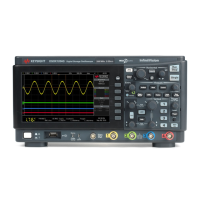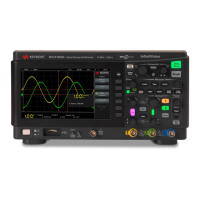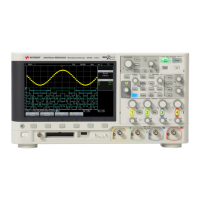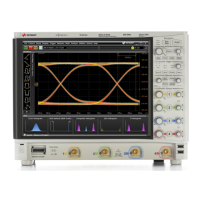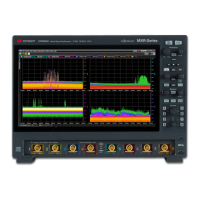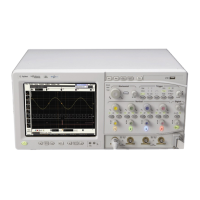239
Keysight InfiniiVision HD3-Series Oscilloscopes
User's Guide
18 Fault Hunter
Statisticians say values more than three standard deviations away from the mean
are outliers. With digital signals, outliers can indicate errors, faults, or anomalies.
Oscilloscope measurements already include mean and standard deviation
statistics. Given a statistically significant number of samples (acquisitions), limits
can be determined from the mean and standard deviation values. With the
determined limits, tests to find anomalies can be automatically set up. These tests
use the available triggers.
This is what Fault Hunter does:
1 Adds some key measurements.
2 Runs the oscilloscope long enough to get thousands of measurements.
3 Uses the mean and standard deviation statistics to set up tests (using trigger
modes).
4 Let you run the tests to find anomalies.
Fault Hunter saves you time by automatically determining limits and by
automatically setting up tests.
To set up and run Fault Hunter:
1 First, make sure the digital signal is being captured appropriately:
• Make sure there is a stable edge trigger for the waveform.
• Make sure that more than four pulses of the waveform are being captured.
If these conditions are not true, you will get errors during the Fault Hunter
automatic set up.
2 From the main menu, choose Analyze > Fault Hunter....
3 In the Fault Hunter dialog box, for the purposes of this description, de-select
the Run All After Auto Setup check box.
